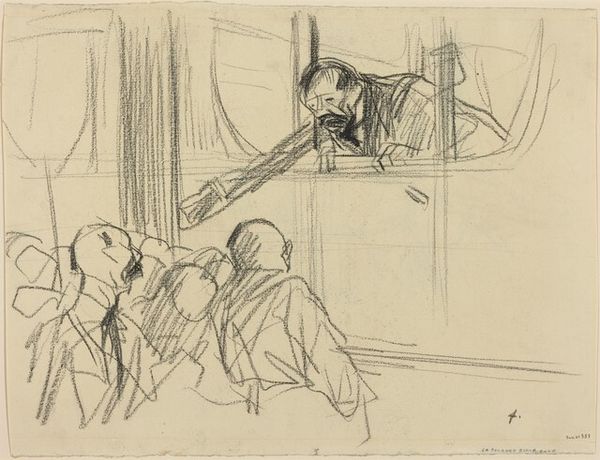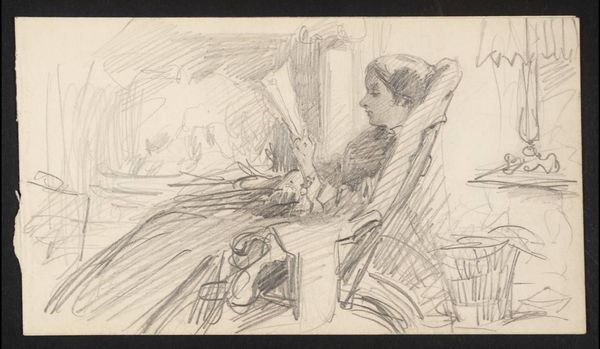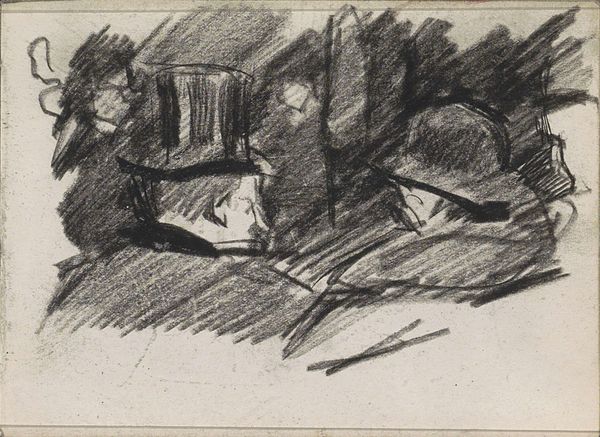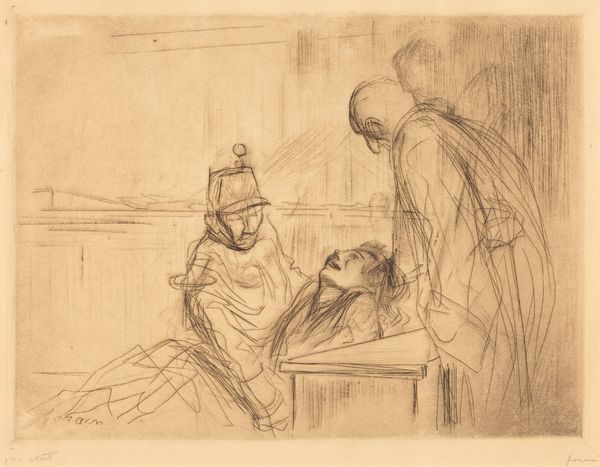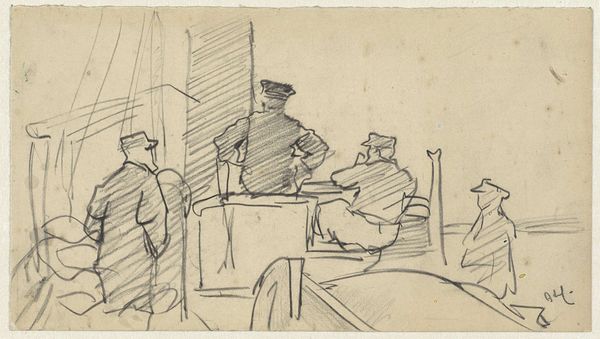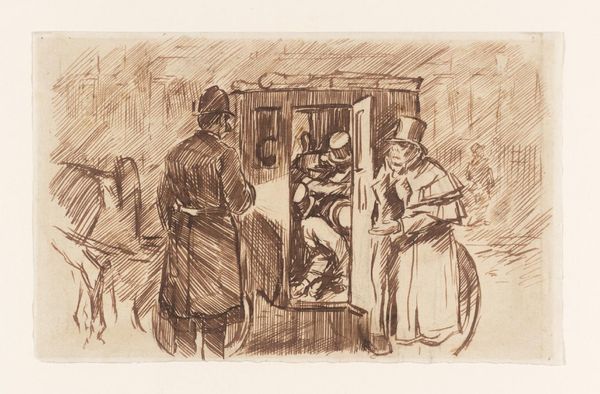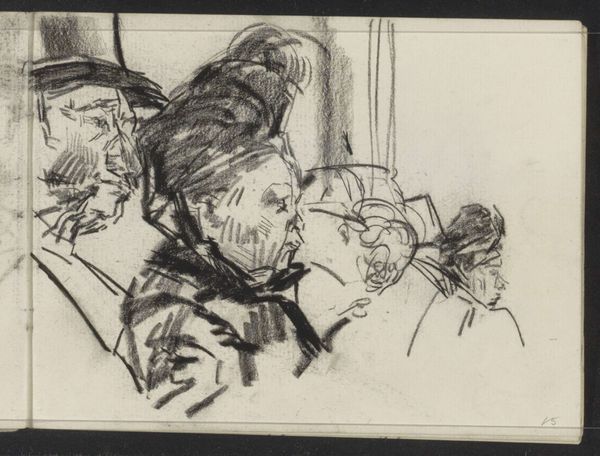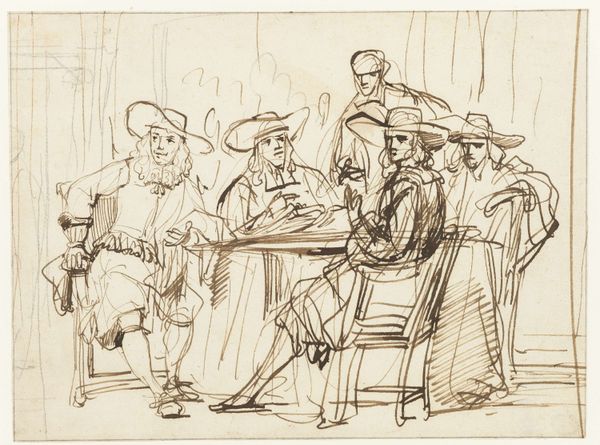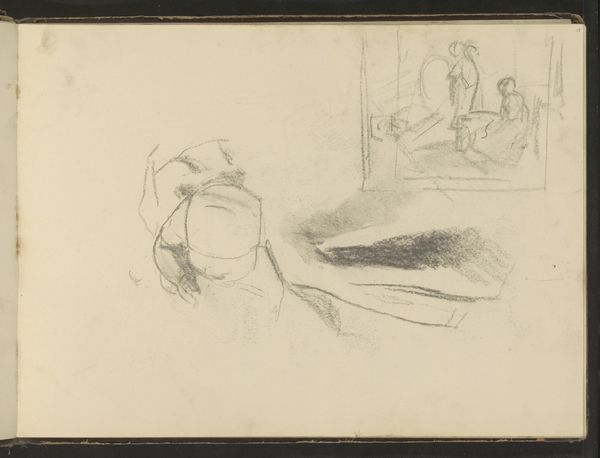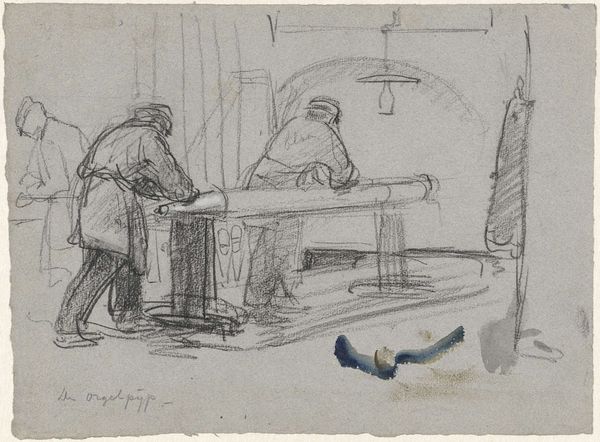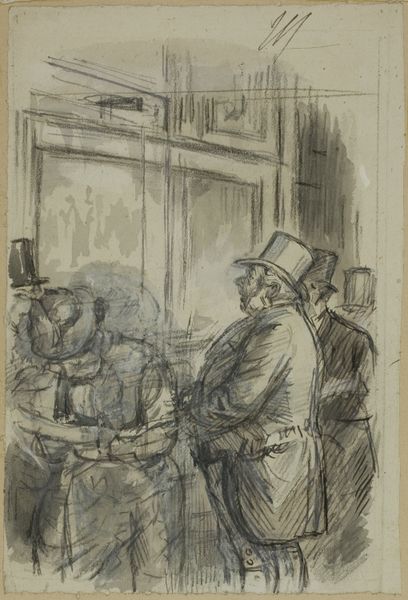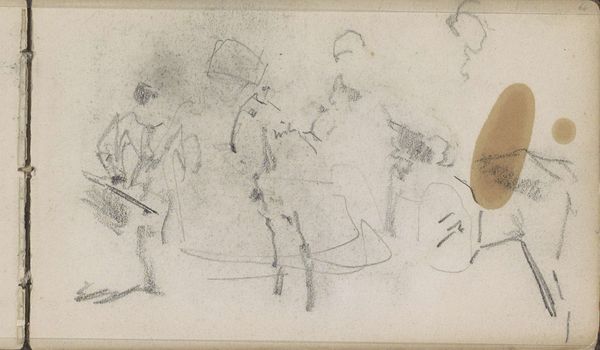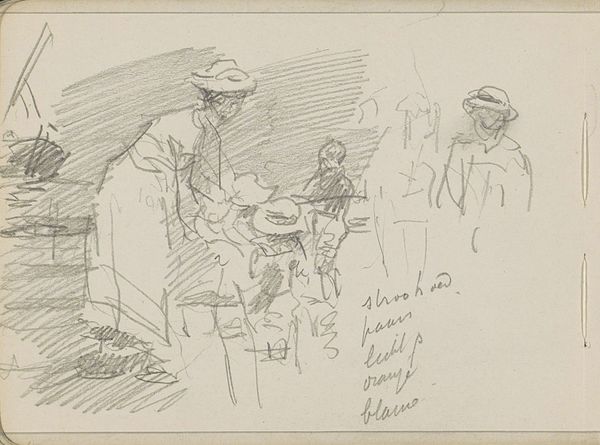
drawing, pencil, pen
#
drawing
#
figuration
#
pencil
#
pen
#
genre-painting
#
realism
Copyright: Public Domain: Artvee
Editor: Jean-Louis Forain’s “The Train for Berne,” made around 1914 to 1919, employs pen, pencil, and drawing techniques to capture what appears to be a poignant departure scene. There's a quiet sadness in the expressions. What do you see in this piece? Curator: Considering the socio-historical context of its production, specifically the First World War, this drawing becomes potent. Pen and pencil, readily available and inexpensive, became the medium for capturing the brutal realities. It wasn't about luxurious oil paints. Think of the immediacy, the desperate need to document and circulate these images. Forain is not crafting a "high art" masterpiece; he is engaged in a form of visual journalism, circulating reports for consumption by the masses. The "train," a modern mode of transportation is juxtaposed with this intimate look at genre painting in wartime conditions. Does that frame the subjects as workers? What sort of production might we associate these figures with, as portrayed through line and medium? Editor: I hadn’t considered the deliberate choice of materials like that. You're saying that the humbleness of pen and pencil contribute to the impact by directly relating to the context of mass production during war. So, the material reflects the state of the society? Curator: Precisely! This isn't some romanticized historical painting made after the fact. This is raw, immediate, and created with materials reflective of widespread social circumstances, from access to art supplies, to labor requirements on the war front, to economic consumption in times of scarcity. How might its circulation, from hand to hand, in reproduction, inform the reading of "realism" in its style? Editor: It definitely gives a new appreciation for the drawing. Now, I'm curious about how this raw portrayal challenges typical boundaries of high art versus the work done in other fields. It seems so deeply intertwined. Curator: Indeed. It urges us to question these hierarchies. The means of production, the labor involved, the audience it reached – all point to a more egalitarian, socially conscious art. Editor: I'll definitely look at art through a materialist perspective from now on. Thanks! Curator: My pleasure. I'm happy to help illuminate these points!
Comments
No comments
Be the first to comment and join the conversation on the ultimate creative platform.
